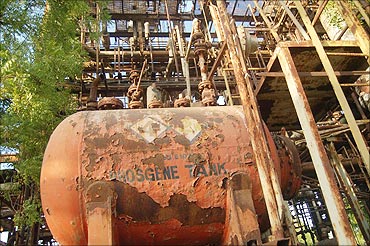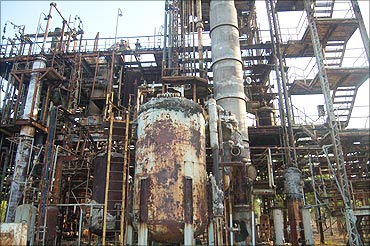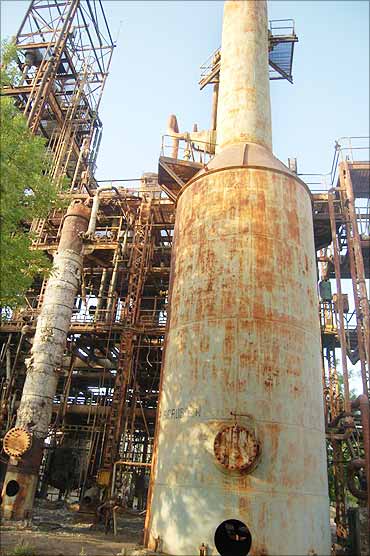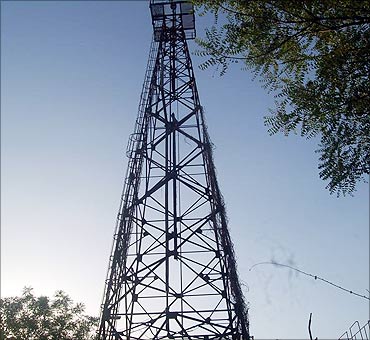 | « Back to article | Print this article |
Inside the horror that is Union Carbide
A day after a very disappointing verdict in India's worst industrial disaster, rediff.com's Prasanna Zore visits ground zero at the Union Carbide plant in Bhopal.
A huge ominous looking, dilapidated hospital greets you at the entrance of what was the dreaded Union Carbide of India Limited plant in Bhopal. As you surreptitiously venture inside the sprawling 93-acre plot, red metal in various state of erosion coldly overlooks a neighbourhood, whose people still shiver when they recall that fateful night of December 2, 1984.
Nearly 41 tonnes of methyl isocyanate (MIC) and Phosgene gas, both noxious and lethal chemicals that are used as intermediates in the manufacture of fertilizer Sevin, leaked out after midnight on December 2 from an underground storage tank that had been installed at the Indian subsidiary of Union Carbide Corporation in Bhopal.
The world's worst industrial disaster
The leak lead to the largest industrial catastrophe in the world's history that killed some 15,274 (official figure as per a judicial review) and affected some 6 lakh --of Bhopal's total population of 9 lakh in 1984 of the town's populace who suffer from chronic joint pains, itchy skin, muscle weakness, poor eyesight, lung cancer to this day.
It was not just the MIC that wreaked havoc. Another poisonous chemical agent Phosgene also leaked into the air and spread fast as the winter winds blew across the plant and spread the gas fumes to other parts of Bhopal.
All the convicted accused got bail
Ironically, all 8 of them were released on a bail of Rs 25,000 despite the fact that these accused were also served two years' imprisonment by the lower court under Section 304 A of the Indian Penal Code instead of Section 304 (Part II). Interestingly, Justice A M Ahmadi in his September 13, 1996 judgment had diluted the charge from Section 304 (Part II) to Section 304 (A).
'An unresponsive and uncaring state'
Union Carbide shirks responsibility
UCIL's cost-cutting endangered people
But why was only one man operating on this tower that maintains release of toxic gases in air? "Because the company had downsized its operations to cut costs," says he while refusing to come on record for this story. "The absence of four people from this tower was also part of UCC's cost-cutting exercise."
'UCIL wasn't responsible enough'
According to the tourist guide, when the gas leaked out from the underground storage tank, it formed a blanket almost three feet above the ground. Whatever was below this height remained unaffected. Most of the trees got charred because of the gases were charred above three feet, he says to stress his point.
"The workers were trained on how to act in case of leakage of Phosgene and MIC. The environment safety engineers had advised them to sleep on the ground in such a situation with their faces covered with moist handkerchiefs to avoid getting affected by both these gases.Those workers who did so survived while those who panicked and ran towards the gate to save their lives died."






